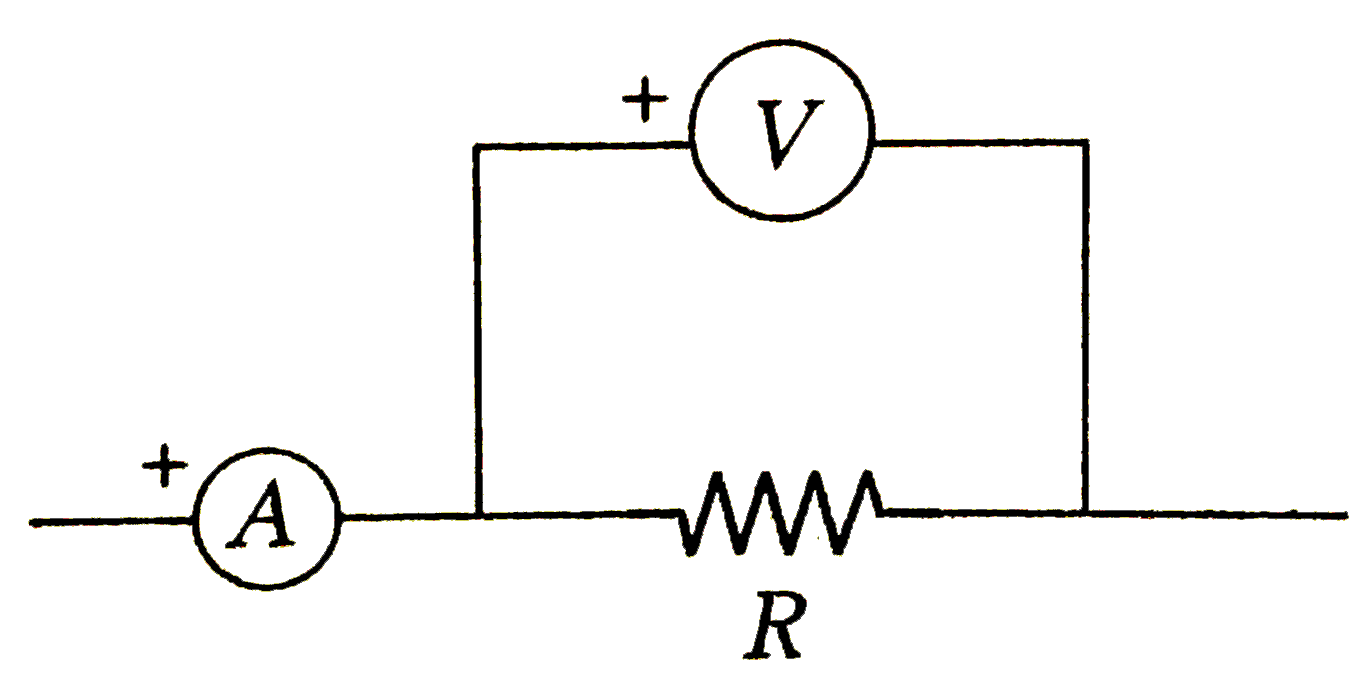A voltmeter, an ammeter and a resistance are connected in series with a lead accumulator. The voltmeter gives some deflection but the deflection of ammeter is almost zero. Explain why?
Voltmeter resistance being very high, when connected in series, it makes the effective resistance of the circuit very high. Due to it, the current in the circuit becomes extremely small. Since ammeter measures the current, hence the deflection of ammeter is almost zero. As voltmeter measures potential difference between the two points, it will show the reading due to voltage of the lead accumulator.
Topper's Solved these Questions
- MAGNETIC EFFECT OF CURRENT AND MAGNETISMBook:PRADEEPChapter:MAGNETIC EFFECT OF CURRENT AND MAGNETISMExercise:Conceptual Problems (d)
Explore 2 Videos
- MAGNETIC EFFECT OF CURRENT AND MAGNETISMBook:PRADEEPChapter:MAGNETIC EFFECT OF CURRENT AND MAGNETISMExercise:Very Short Answer Questions (a)
Explore 2 Videos
- ELECTROSTATICSBook:PRADEEPChapter:ELECTROSTATICSExercise:ASSERTION-REASON TYPE QUESTIONS
Explore 2 Videos
- OPTICSBook:PRADEEPChapter:OPTICSExercise:Multiple choice questions
Explore 1 Video
Similar Questions
Knowledge Check
A voltmeter can be converted into ammeter by connecting
Aa low resistance in seriesBa low resistance in parallelCa high resistance in seriesDa high resistance in parallelWhat resistance should be connected in series with a 0.5 A ammeter to convert it into a 15 V voltmeter ? Given that the resistance of ammeter.
A2ΩB5ΩC15ΩDnone of theseAn ammeter and a voltmeter are connected in series to an ideal battery of emf E. If the ammeter reads I and voltmeter reading V, then
AV<εBthe resistance of voltmeter is V/ICP.D. across the ammeter is E-VDAmmeter and voltmeter have equivalent resistance = E/l
The hot wire ammeter A in Fig. shows some deflection, but not in Fig. Why ?
View SolutionAn ammeter A, a voltmeter V and a resistance R are connected as shown in the figure. If the voltmeter reading is 1.6V and the ammeter reading is 0.4A, then R is

View SolutionA voltmeter and an ammeter are connected in series to an ideal cell of emfE. The voltmeter reading is V, and the ammeter readings is I. Then
(i) V<E (ii) the voltmeter resistance is V/I
(iii) the potential difference across the ammeter is E−V
(iv) Voltmeter resistance + ammeter resistance = E//I
Correct statements are
View SolutionAn ammeter and a voltmeter of resistance R are connected in series to an electric cell of negligible internal resistance . Their readings are A and V respectively. If another resistance R is connected in parallel with the voltmeter , then
View SolutionAn ammeter and a voltmeter of resistance R are connected in series to an electric cell of negligible internal resistance . Their readings are A and V respectively. If another resistance R is connected in parallel with the voltmeter , then
View Solution

